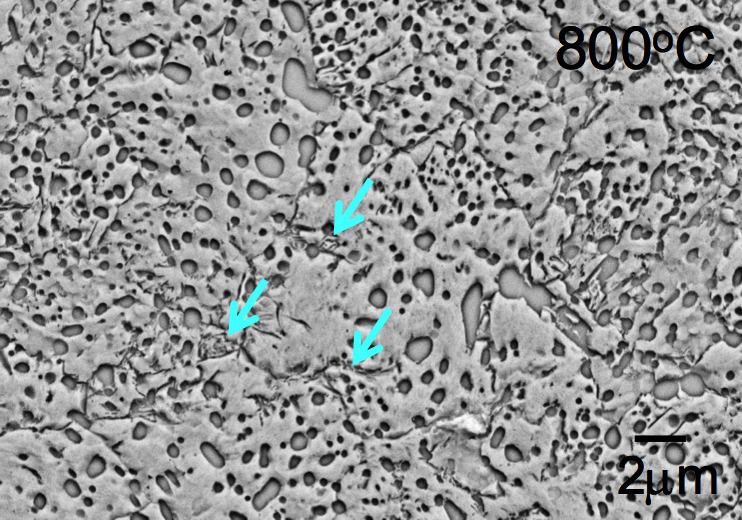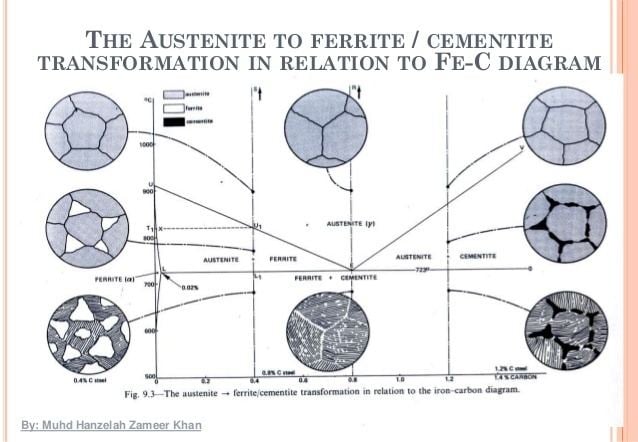 | ||
Cementite
Cementite, also known as iron carbide, is an intermetallic compound of iron and carbon, more precisely an intermediate transition metal carbide with the formula Fe3C. By weight, it is 6.67% carbon and 93.3% iron. It has an orthorhombic crystal structure. It is a hard, brittle material, normally classified as a ceramic in its pure form, and is a frequent found and important constituent in ferrous metallurgy. While iron carbide is present in most steels and cast irons, it is produced as a raw material in the Iron Carbide process, which belongs to the family of alternative ironmaking technologies
Contents

Metallurgy

In the iron–carbon system (i.e. plain-carbon steels and cast irons) it is a common constituent because ferrite can contain at most 0.02wt% of uncombined carbon. Therefore, in carbon steels and cast irons that are slowly cooled, a portion of the carbon is in the form of cementite. Cementite forms directly from the melt in the case of white cast iron. In carbon steel, cementite precipitates from austenite as austenite transforms to ferrite on slow cooling, or from martensite during tempering. An intimate mixture with ferrite, the other product of austenite, forms a lamellar structure called pearlite.
While cementite is thermodynamically unstable, eventually being converted to ferrite and graphite at higher temperatures, it does not decompose on heating at temperatures below the eutectoid temperature (723°C) on the metastable Iron-Carbon phase diagram.
Pure form
Cementite changes from ferromagnetic to paramagnetic at its Curie temperature of approximately 480 K.

A natural iron carbide (containing minor amounts of nickel and cobalt) occurs in iron meteorites and is called cohenite after the German mineralogist Emil Cohen, who first described it. As carbon is one of the possible minor light alloy components of metallic planetary cores, the high-pressure/high-temperature properties of cementite (Fe3C) as a simple proxy for cohenite are studied experimentally. The figure shows the compressional behaviour at room temperature.
Other iron carbides

There are other forms of metastable iron carbides that have been identified in tempered steel and in the industrial Fischer-Tropsch process. These include Epsilon (ε) carbide, hexagonal close-packed Fe2-3C, precipitates in plain-carbon steels of carbon content > 0.2%, tempered at 100-200 °C. Non-stoichiometric ε-carbide dissolves above ~200 °C, where Hägg carbides and cementite begin to form. Hägg carbide, monoclinic Fe5C2, precipitates in hardened tool steels tempered at 200-300 °C. Characterization of different iron carbides is not at all a trivial task, and often X-ray diffraction is complemented by Mössbauer spectroscopy.
